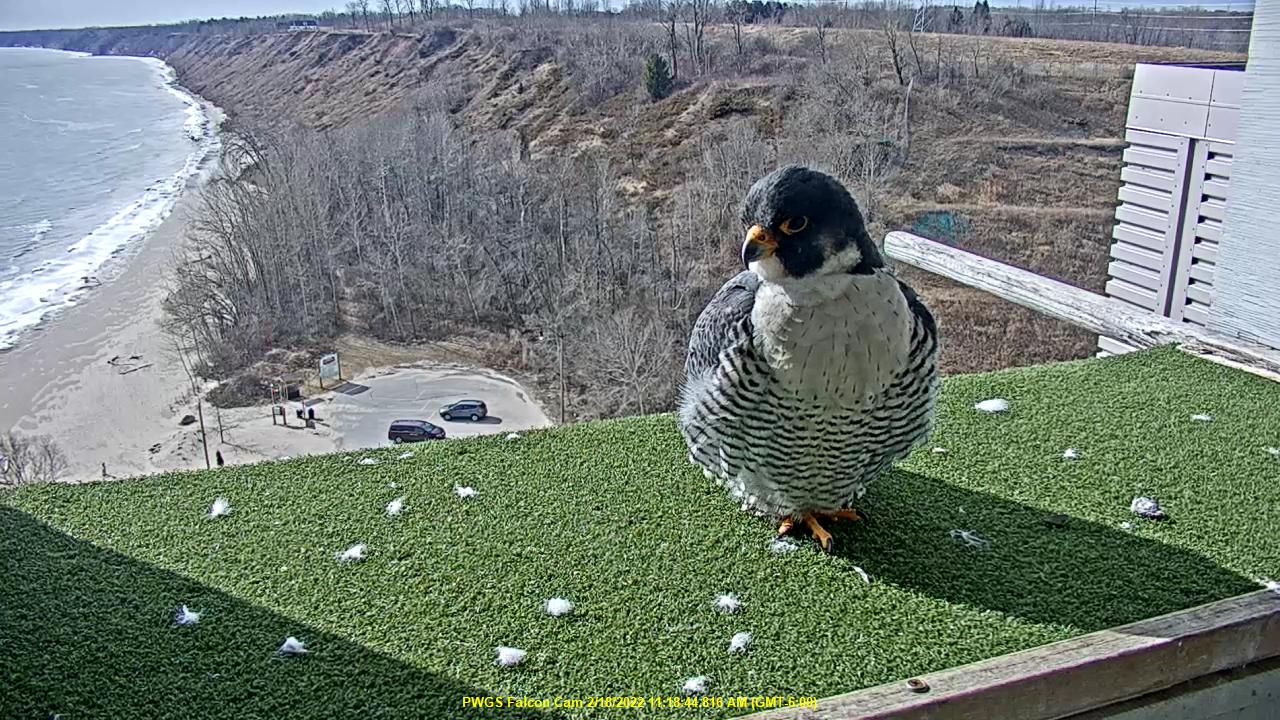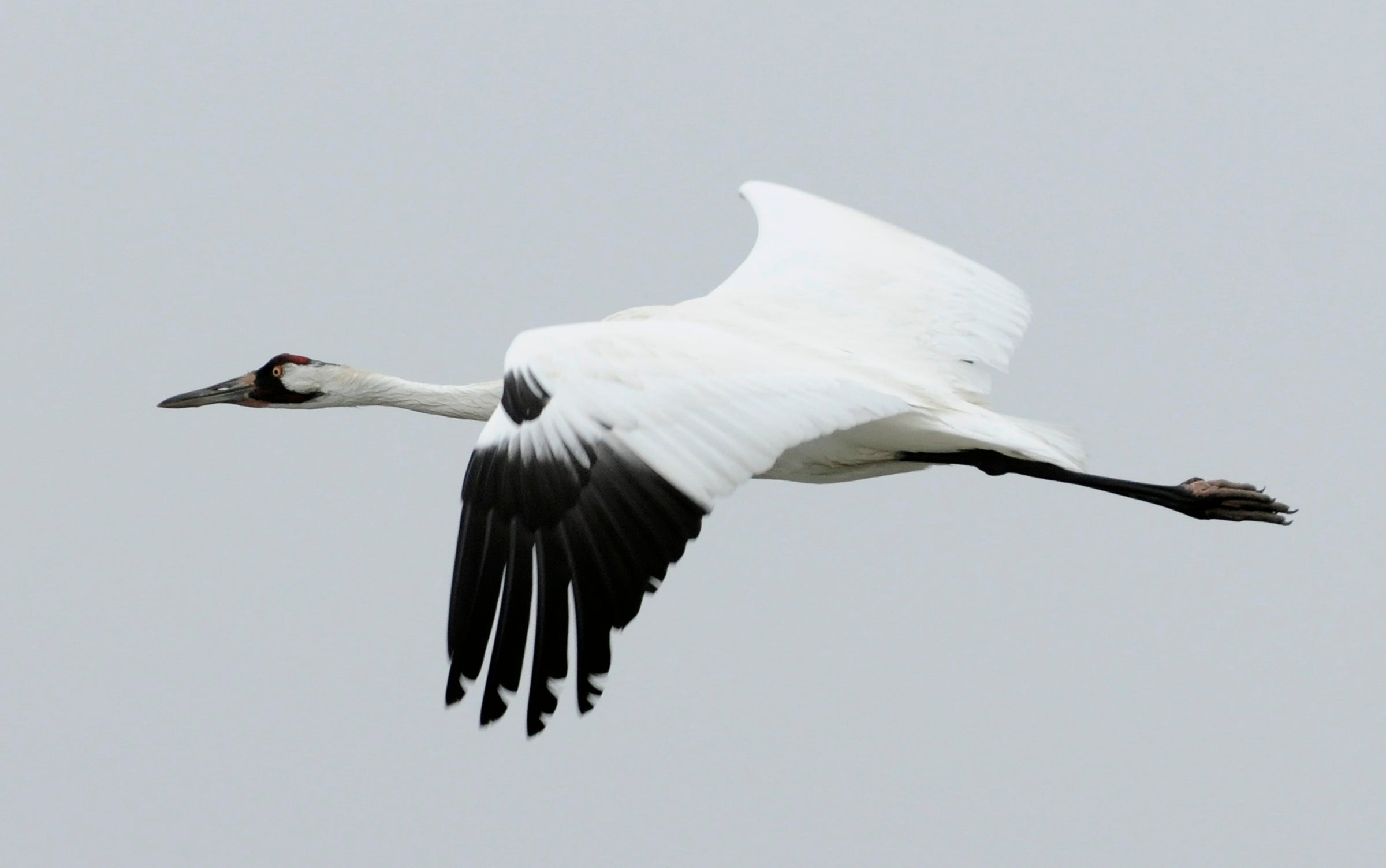The world’s fastest animal nearly went extinct by the mid-1960s, but an unlikely partnership between a power utility and environmentalists helped lead to a rebound that has peregrine falcons once again bulleting through Wisconsin’s skies.
In the mid-20th century, the agricultural pesticide DDT killed insects, but researcher Greg Septon said “it also worked its way up the food chain.” Peregrines began to lay thin-shelled eggs after foraging on songbirds, which ate insects that he said had been contaminated. The federal government didn’t ban the chemical until 1972.
Years later, the peregrine falcons started to take flight again in Wisconsin when Septon founded the statewide Falcon Recovery Project in 1986.
Stay informed on the latest news
Sign up for WPR’s email newsletter.
Despite not seeing any peregrine falcons growing up, Septon said he had always taken an interest in the species. While working for the Milwaukee Public Museum, he thought of putting up nest boxes on tall structures along the Lake Michigan shoreline for migrating birds.
“There were a lot of sleepless nights that winter, I wondered if it was going to work or not. And I thought, ‘if it doesn’t work, I’m gonna look pretty dumb,’” Septon said. But it did — the first pair of peregrine falcons produced young at a Sheboygan power plant owned by Alliant Energy.
READ MORE: Peregrine falcon nesting program helped fuel raptors’ return to Wisconsin
And in 1992, We Energies and Wisconsin Public Service agreed to support the project. That year, fifteen young peregrine falcons produced in captivity were released from nests atop the Pleasant Prairie Power Plant.
The goal was to release captive-produced chicks into the wild to a point where enough could start nesting in natural areas, according to Mike Grisar, an environmental team leader for WEC Energy Group, which owns We Energies.
“Through the peregrine falcon, we have this phenomenal opportunity every year to raise awareness of protected species and species that are not doing well,” he said.
Last year marked the 30th anniversary of the program, and since its inception, the sites have seen the births of more than 400 chicks. The state now has about 40 nesting pairs.
“Power plants actually make great habitats for peregrine falcons because they’re really tall. And they’re usually along bodies of water, so they’re like manmade cliffs,” said Alison Trouy, spokesperson for WEC Energy Group. The group contributed $40,000 to early falcon recovery efforts.
Between 1987 and last year, almost 50 percent of all peregrines produced in the wild in Wisconsin were born at power plants, 20 percent at We Energies, Septon said, adding it’s “the only state that has that sort of a scenario.”
“One of the things that’s been very encouraging is that parents have begun returning to their historical cliffs, where they’ve nested for centuries and thousands of years, actually along the Mississippi River, the Wisconsin River and of course, the Door Peninsula,” Septon said.
A dozen parents nested on cliffs this year, what he describes as “a real positive sign going forward.”
“Without the efforts of people in cities and urban areas where there are tall structures and providing nest boxes, we would not have been at this point by now,” Septon said.
“This is a milestone we’re incredibly proud of. And it’s really just one of the many ways that we demonstrate our environmental stewardship,” Trouy said.
Grisar added that their web cameras are also popular for people to watch the birds raise their young. In all, there are three We Energies sites and one WPS site, with others scattered across the state.
“We know that so many people enjoy being able to have just a window into the life of an endangered species. It’s such a rare thing,” he said.
The peregrine falcons have a 50 percent or greater first-year mortality rate, just another reason Septon said they need to be protected.
“We need to keep those numbers high, knowing that we’re going to lose at least half the unproduced every year going forward,” he said. While Septon said it may sound like a high mortality, “it’s nature’s way of ensuring the very best genes are passed onto the next generation, and that keeps the species viable and vibrant.”
Septon said it’s important the community continues raising awareness. While peregrine falcons have been removed from the federal endangered species list, they are still listed as endangered in the state of Wisconsin.
“None of this is short-term. Unfortunately, we can’t wave a magic wand and bring a species back,” he said, adding it takes work, time and money. “So as long as those efforts are maintained, as long as people stay interested, I think the future looks fairly bright.”
Wisconsin Public Radio, © Copyright 2025, Board of Regents of the University of Wisconsin System and Wisconsin Educational Communications Board.






